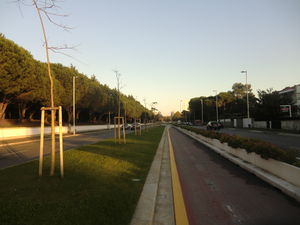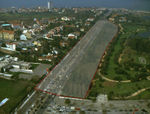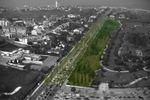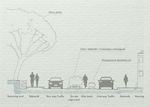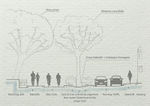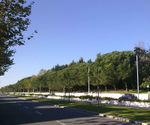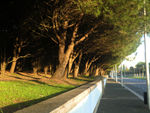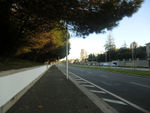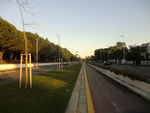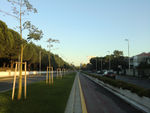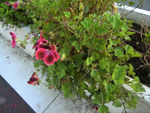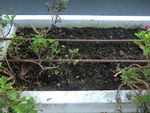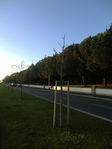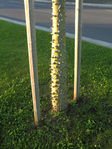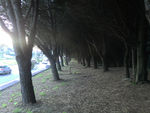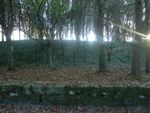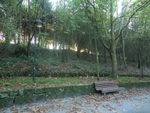Planting Design 2013 Working Group 1 - Case Study B
---> back to group page working group 1
Images of Nature - Boavista Avenue Greenway in Porto city
Rationale: Why is this case interesting?
- The Boavista Avenue Greenway, as I call it, it’s a part of the biggest avenue in Porto that goes from the ocean in the west side during 6 Km until the Boavista roundabout in Porto city center. In the west side, this avenue goes along with the south side of the Porto Urban Park (Parque da Cidade do Porto), which it´s one of the biggest urban parks in the world with an ocean front through over 80 hectares of a green lung.
- I selected this avenue section because on last times it has been an urban landscape with a lot of changes. Several projects have been going on in this section because of its different uses along the time as, for example, a tram network system, bike tracks, planting beds, sidewalks, highway, the Porto Urban Park and also a part of the Boavista International Rally. In this way this section of the Boavista Avenue has feeding a controversial social debate about its functions and it´s aesthetics. All this aspects have a huge impact on the planting design that´s possible to see there today and which is influenced by different solutions.. In this study case it´s possible to find some problems and some good planting design ideas.
- The Boavista Avenue is very near from the place I live in Porto and the Urban Park which goes along with, it´s a place I use to use a lot for jogging or bike. Both the urban park and this section of the avenue are places that works as planting design laboratories for me because of its diversity of aproaches.
Author's perspective
I have a bachelor in Landscape Architecture and for me the Boavista Avenue Greenway is an interesting study case because of its different uses along the time and its impact on the planting design. Different planting design approaches have been tried out and as a result it would be possible to analyze the evolution of different cross sections where its important to reflect about the use of an ecological corridor along with different means of transportation at the same time it has to be a flexible system because of its annual international rally event. Therefore it's important to analyze the spatial evolution as a whole where planting design plays an important role and acts as an urban spatial organizer.
Landscape and/or urban context of your case
- Biogeography Context:
Porto is part of the Eurosiberian region and its part of the Galaico-Portuguese Sector. This means Porto climate has a strong influence of the Atlantic ocean temperate effect and the amplitude of annual temperatures is moderate (little continental effect), so in Winter it's possible to have temperatures between 5°C and 14°C and in Summer between 15°C and 25°C. The precipitation can vary in extreme ways during the year and in Winter its possible to have abundant raining periods in short time and in Summer it can happen to have several weeks without raining, so the precipitation it’s a limiting factor when a landscape architect is choosing the vegetation. This climate together with a granitic soil and a hilly topography makes the city of Porto a place where a huge variety of vegetation can grow and adapt.
- Cultural features, overall character, history and dynamics
The Boavista avenue was part of the first network of tram systems in Portugal dated back to 1872. As a result this had a great impact on the city mobility. During the 19th century this tram network system has spread around the city of Porto. Later, some of the lines were out of service because of the beginning of other type of public transport as the BUS. In Boavista Avenue, the tram line was out of service from 1999 and much of the space was left abandoned and in some cases it was used as a parking space somehow caothic. From 1993 until 2002 the Porto Urban Park was constructed and as most of its south part represents the borderline with the Boavista Avenue, it is very important to reflect about the relationship between this two realities, the urban park and the busy avenue. Other important historic aspect which influenced the overall character of this space is the "Boavista Rally" dated back to 1931 when were organized the first races. This annual event lasted until the 60's and returned in 2005, which has a big impact on the image of the avenue. The last intervention in the avenue was made in the context of adapting it to this race event and at the same time with a different infrastructure including a new bike track, new pavements and a new planting design which included new flower beds (Pelargonium domesticum), new tree alignments (Chorisia speciosa) and a new grass area along the roads. The flower beds are removable to adapt the space to the annual races. So, all the planting design was thought to be aesthetical attractive. Anyway I would point some aspects in this planting design approach that I think are important to reflect:
1 - The displacement of the Platanus x acerifolia from the urban park sidewalk pit was a good option because the Pinus pinea planted over a retaining wall in the urban park grew very well until 15/20 meters competing for the sun with the Platanus x acerifolia that started to have several problems. In this case Pinus pinea can function very well as a street pit tree of the paved sidewalk.
2 - The flower beds of Pelargonium domesticum, which is a native species from South Africa was a good decision because this specie is a very resistant evergreen perennial. They can be kept in flower throughout the winter months and almost all year which gives nice colors to the avenue. Their main requirement is a warm, sunny, sheltered location like the flower beds where are located. Many varieties tolerate drought conditions for short periods and it´s why there is a drop irrigation system on this flower beds.
3 - The choose of Chorisia speciosa, as an alignment tree throughout the avenue was a bad decision in my opinion. This is a species of deciduous tree native to the tropical and subtropical forests of South America and it´s a tree which is not freeze or salt tolerant. This avenue is very cold and windy in the winter time and brings the saltiness of the sea with it which is harmful to the tree health as is possible to see on the pictures below. Other problem is the fact that this tree does not do well in competition with lawn grasses which is the case, mainly when it´s a young tree. The bulbous green trunk is covered with big blunt warty triangular spines and turns gray as the tree gets older. This can be dangerous to the bikers as the bike track in right along this trees and for a safety measure this spines should be removed from the basis of the trunk until arround 2 meters what didn´t happened in this case. This tree has large roots often formed at the base of the trunk just beneath the soil, so it shouldn´t be planted too close to sidewalks or pavement and fifteen feet from curbs, driveways and sidewalks should be adequate what is not the case.
4 - The use of lawn grasses as a ground cover along with the plantation of Chorisia speciosa, is not a good planting design choice because of the competition for water as mentioned before and also because of the maintenance costs. The process of mowing has to be done about 3 or 4 times a year and irrigation, especially in summer, has high water demand.
- Localization of the case study - Boavista Avenue in Porto city
Analytical drawings
- Descriptive Analysis
- Analytical Cross Sections (hand drawing + Illustrator)
Projective drawings
- In a close time frame (1 - 2 years) the only change would be to the planting design scheme. In my projective cross sections I propose to take out the tree alignment of Chorisia speciosa (only the exemplars with bad health) because it´s a tree that is not adapted to the site climate and it has a dangerous trunk to cyclists. Instead of this specie over the lawn (high maintenance costs and competition) I propose to have an alignment of mixed shrubs, Cistus ladanifer and Crataegus monogyna), both portuguese native species. Crataegus monogyna is a deciduous shrub with a nice white flower from late spring to early summer and can grow until 3/4 meters. Cistus ladanifer is an evergreen shurb also with white flowers that can be use as a perennial structure when combined with Crataegus monogyna.
- In a long term period ( 10 - 15 years) I would propose to restructure all the avenue to give more room to the bike track and at the same time developing a green corridor using the same shrubs of the first phase, but adding a new tree alignment as a new vegetation stratum, Platanus x acerifolia because it´s a tree with a good performance in Porto climate. In this way, this linear design along the avenue with trees and shrubs create a sound a visual barrier against the traffic and at the same time it allows a better rainwater management along the avenue slowing down the runoff.
- Projective Drawings
Summary and conclusion
The Boavista Avenue Greenway it´s a linear structure going from the city center to the ocean with a particular microclimate because of its localization. Along the time it was a place with diverse uses and its importance to the city was crucial as a fast lane to cars, tram, bus and pedestrians. My case study, the part of Boavista avenue which have its borderline with the Porto Urban Park it´s a particular section of the avenue because of the aesthetical and ecological strengths it adds to the avenue scenario. The projective cross sections of this case study have into account two time frames of intervention in the planting design structure as well as the structure of the bike track and the road that come together in an overall idea which takes into account the following three aspects: ecological infrastructure, rainwater management and safe and enjoyable mobility. All this aspects aim to improve this avenue as a reference urban nature scenario in Porto city.
Image Gallery
- Image Gallery
References
* http://www.circuitodaboavista.com/gca/index.php?id=391#cont
* http://daraopedal.blogs.sapo.pt/58664.html
* http://tram-porto.ernstkers.nl/indexp.html
About categories: You can add more categories with this tag: "", add your categories
